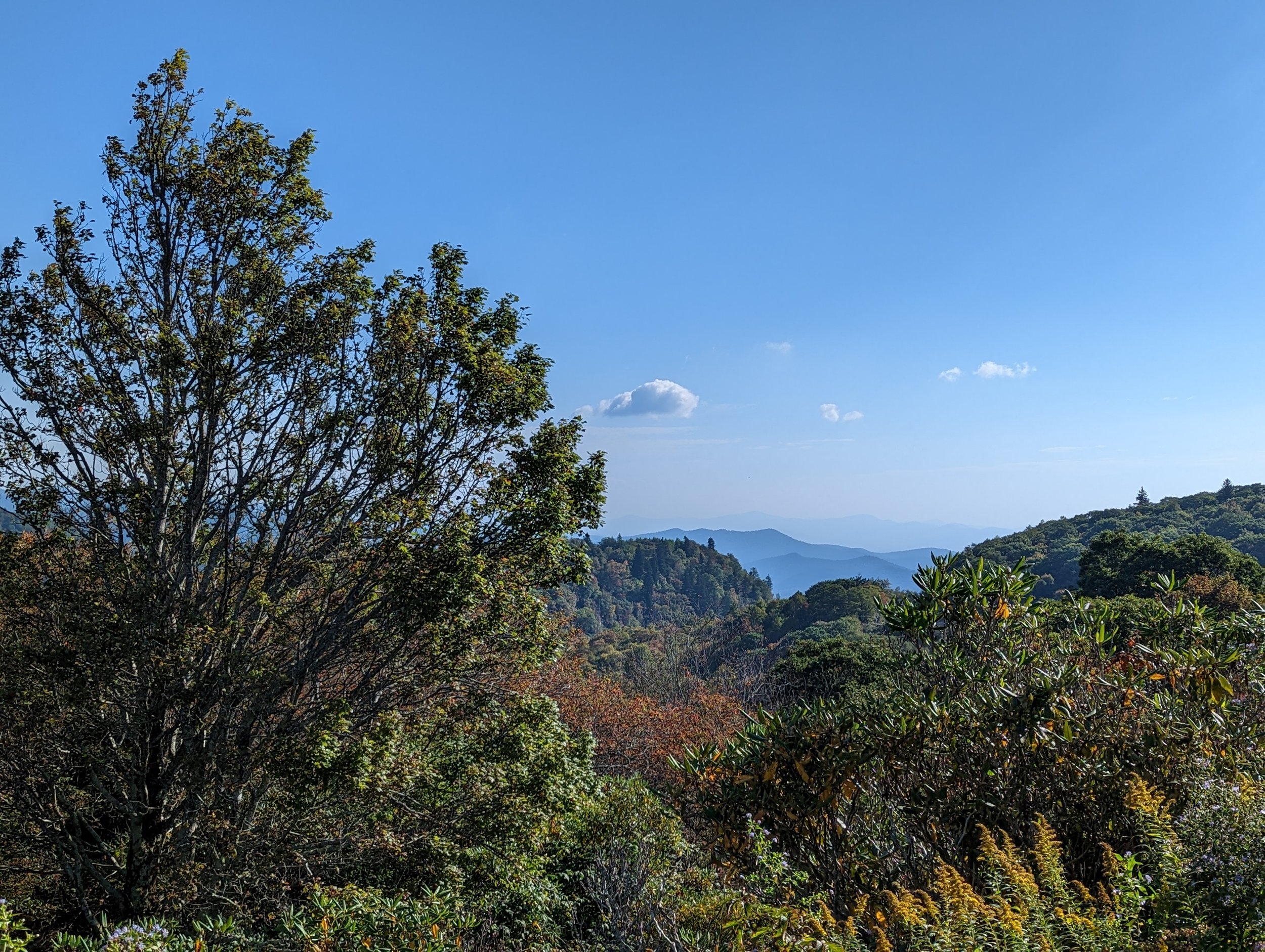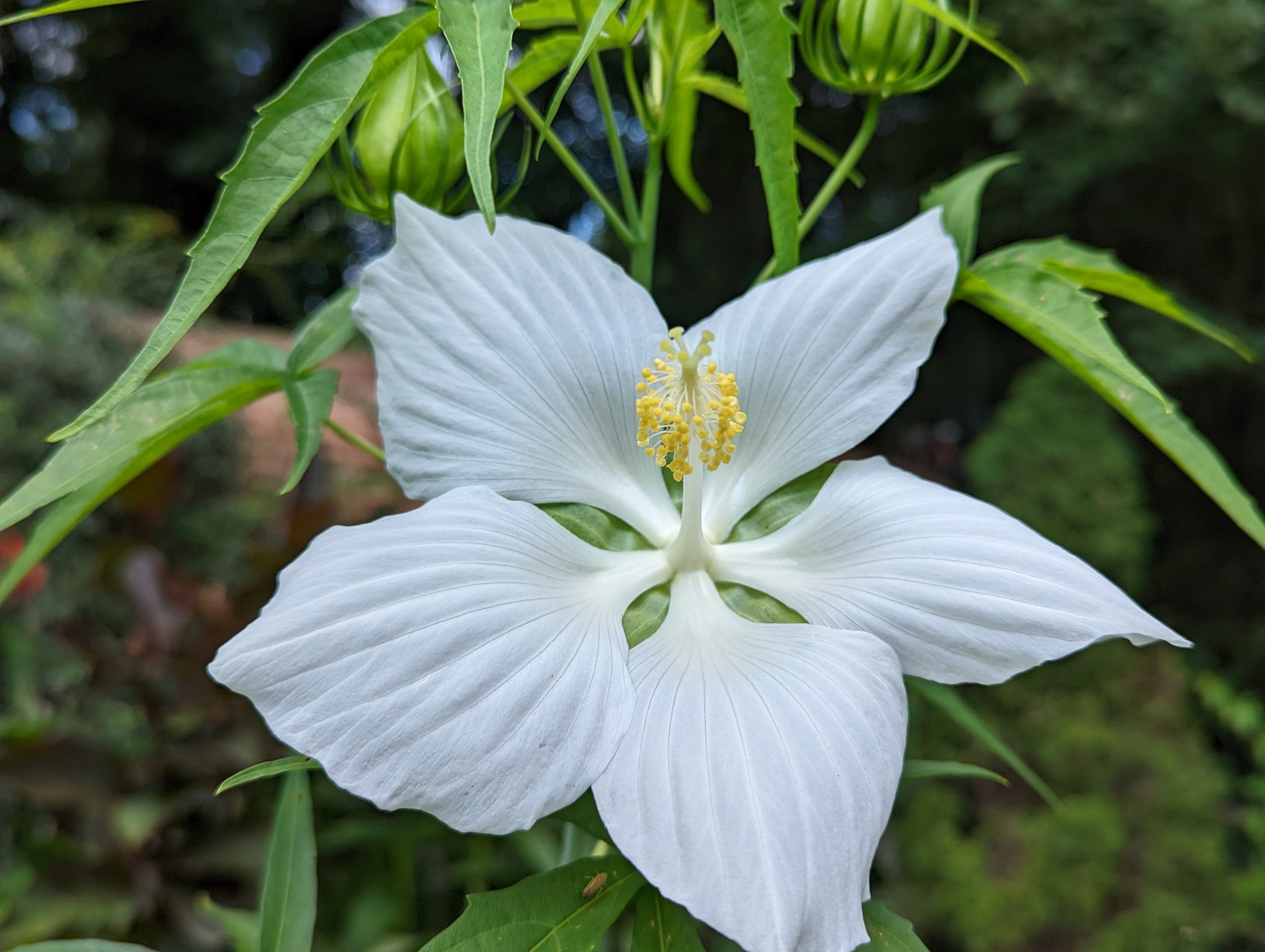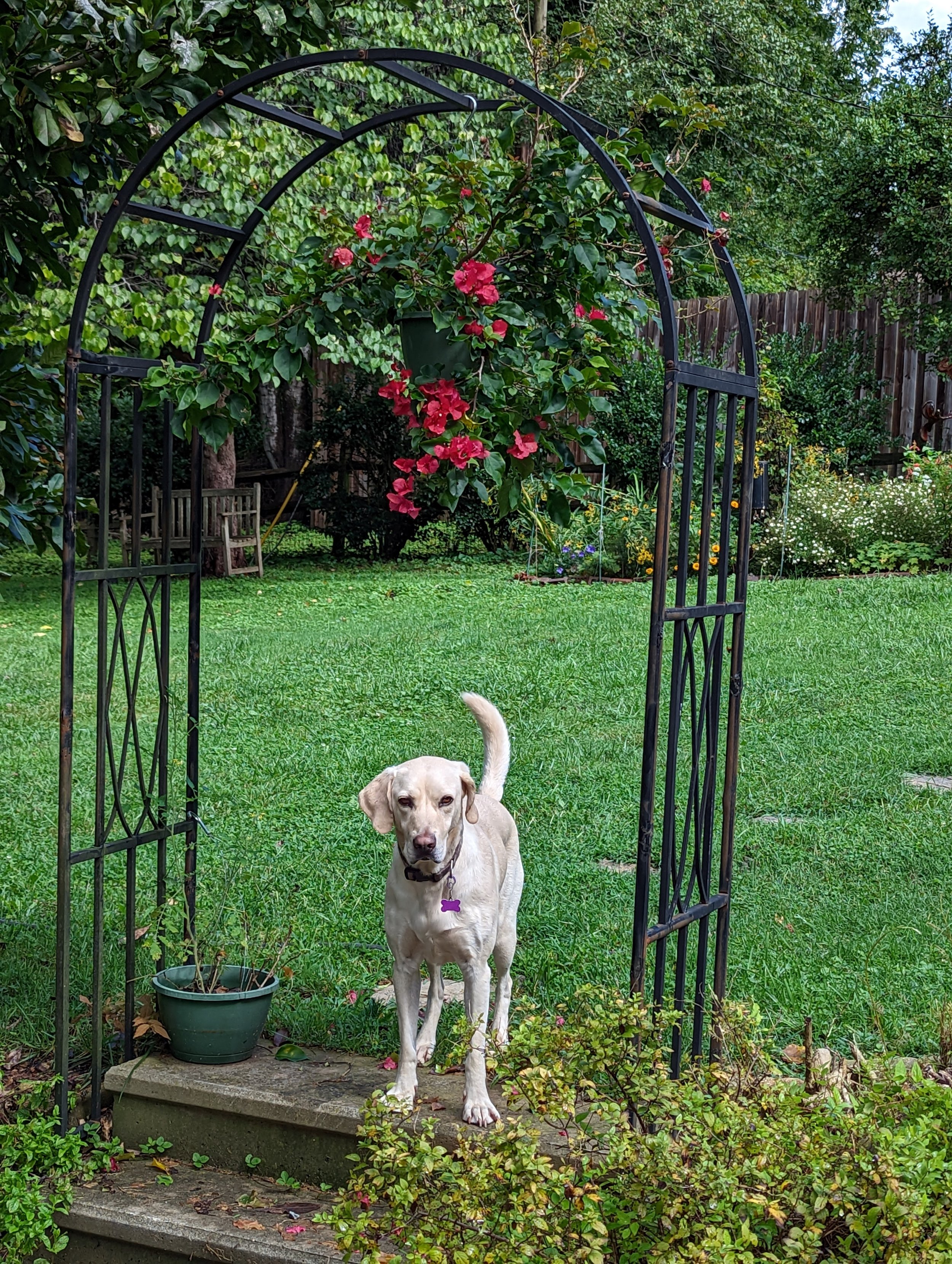View from the Graveyard Fields hiking area along the Blue Ridge on Sept 22 2022
The last repost was my overview of my 1996 tomato garden - here is Carolyn’s. Reading it again was a joy. It is a gem!
______________
1996 Summer Tomato Grow-outs
Carolyn Male
This summer will be a summer of surprises since most of the varieties I’m growing are totally new to me. As always, first priority goes to replenishing seed stocks of those varieties I offer through the Seed Savers Exchange (SSE). This past spring I completely ran out of several varieties such as Omar’s Lebanese, Yellow Brandywine (Platfoot) and Dr. Lyle. It’s true that I wrote a glowing report for Omar’s, but that’s because it was exceptional for me. In the SSE Yearbook I also described one tomato as being “vile” and one person said she just had to have it to see what bad really was. I hope, for my sake, it’s bad for her, too!
So, the first fifty of my growouts were for new seed stock. Then came a small series of various crosses to be used to generate F2 varieties to offer to OTV subscribers next spring. So far, the most interesting appears to be a Galina X Black Krim cross donated by Steve Draper and a possible Brandywine X Big Rainbow cross donated by Stanley Zubrowski. We could use more F2s, so if you see a cross in your trials please save lots of seed for us if you can. Velvet Red (angora foliage), Brianna, Pink Ice and several others were from Joe Bratka. Chuck Wyatt wanted to be sure I tried Korean Love and Sojourner, so he sent me the seeds. Steve Draper sent along the above cross and a few others including something labeled “Surprise”. When I asked him a few weeks ago if Surprise was indeterminate or determinate, he professed to not know! Ha! I’ll get him next year. Next there were about 40 varieties from various seed companies in France and from an SSE member in Sweden that I got from a friend in England. Most of those I could spell, but then came a series from an American friend with names like Vesennij Micurinskij (my label reads “Ves”) and Slivovidnyj (my label reads “Sliv”).
Next came a series of 19 varieties I’m trialing for someone; seed will not be reoffered by me. Then comes another series of 11 Russian varieties I’m trialing for someone else and I won’t be reoffering seed of these either. This latter series came labeled with numbers only for identification. So there’s no chance of seeing a label that says Humungous Heavenly Rich Red and saying “by gosh, it is!”. And the total count at this point is 156 and I’m getting worried. Of the varieties obtained from the USDA this year I have room for only Livingston’s Perfection and Peach Blow Sutton. Arriving late, but not too late to sow are 22 varieties from Tom Wagner as explained in the last issue and in the current C and C’s column. Of course I am just trialing these and no seed will be available. So as you can see from the above, a good portion of my 200 varieties are varieties I’m excited to experience and trial for others, but will not be offering seed from these for obvious reasons.
Then I had to plant the varieties I’d be using in the 1850s Shaker reproduction garden I do; varieties such as King Humbert, Green Gage, Red and Yellow Pears, Early Large Red and Triumph. The very last think I do is to look over the varieties sown and be sure I’ve got most of my favorites and to be sure I’ve got representatives from all color classes and shapes and foliage in case a field demonstration day is scheduled. I cannot be without German Red Strawberry, Large Pink Bulgarian, Riesentraube, Aunt Ruby’s German Green, Orange Strawberry, Marizol Gold, Regina’s Yellow, Green Grape, Dr. Carolyn (my Galina ivory mutant), Sandul Moldovan, Russian #117, Golden Queen, Lillian’s Yellow Heirloom, Opalka and several others! I’d like to thank Steve Draper for naming my Galina ivory mutant “Dr. Carolyn” and introducing it to the SSE. It’s a bit embarrassing but it’s a good tomato!
And it appears that there might be a field demonstration day this year via the Cornell Cooperative Extension of a five county area in Eastern NY state; I’ll know for sure in mid-June. Our regular readers will know that I have a commercial farmer friend named Charlie who allows me to transplant everything at his greenhouses and then he grows on the plants for me. Charlie also prepares the fields for me and his “folks” do all the early cultivating and fertilizing for me. I thought Charlie would be pleased when I told him about the possible field demo day, but he winced, badly. You need to understand that Charlie tolerates heirloom tomatoes, he doesn’t like them…he humors me. You also need to understand that Charlie’s fields are meticulous, with nary a weed anywhere. That’s why he was wincing. I have a good close personal relationship with weeds, he doesn’t. Last fall we went nuts cleaning mine out because a photography crew was coming, and he wasn’t going to go through that again. So, here’s what I got. For the first time ever Charlie put weed retardant on MY field. And for the first time ever the rows are commercial distances apart so we can cultivate longer into the season. And for the second year in a row Charlie made the row marks for me with his plant setter. Until two years ago the highlight of the season was watching yours truly try to make a straight 250 foot row so all the others would be straight. I’m not very good at it, even using his furrow marks. Now I have no problems with the rows being straight, but crawling along and planting nine rows each 250 feet long is not kind to my arthritic knees. And I also got the soil saturated with this noxious chemical which costs about $600 per gallon and is supposed to protect against Colorado Potato Beetles for the whole year with just one application. I won’t tell you the name for two reasons. First, it’s available only to those with a certain class pesticide certificate and can only be used in those states and counties where it has been approved. And second, I don’t know if it’s going to work yet. I’ll need a few more weeks of observations. I have too many plants to hand pick the beetles or use BT (San Diego) easily, and my beetles are so smart they head for the potato leaf plants first. I tell you truly! After planting a third plant this year I saw my first beetle. It had a megaphone and was broadcasting the news that the nice lady was setting out breakfast, lunch and dinner for the whole crowd for the next few months. OK, so I don’t grow organically. I do let Charlie use chemicals. You try taking care of 600-800 plants in a disease prone area…and I’m “up” on my disease prone areas after doing the research for the OTV Disease project. Hope you’ll still love me knowing I personally don’t put the noxious chemicals on the tomatoes…I let Charlie do it!
One of my favorite times of the growing year occurs after I transplant my plants from Charlie’s greenhouses to my greenhouse for hardening off. My greenhouse hasn’t had sash for 20 years. My greenhouse has birch trees, blackcaps, nightshade, Queen Anne’s lace, perennial sweet peas and wild grapevine growing inside. My greenhouse has falling down, rotting benches, except at one end which is roofed over where the old furnace sits stoically gazing at the old oil tank. When I was a child all the furnaces in all the greenhouses burned coal and the conversion to oil was a big event. It takes me several days to sort out the plants in the order I want and to label the extras to give away. Those few days are heaven. The light is filtered by the birth trees and it’s so peaceful. No phones, radios, TVs, etc. Occasionally my mother’s cat Boots, a Tiger cat with notches in his ears from various “life experiences” and a gimpy front left leg as a result of a luxated joint from fighting some critter, comes to join me. We talk, but he always gets bored first and leaves. I don’t take it personally; he’s a cat and needs to feel superior!
All the tomatoes were planted out in the last week of May. The last row in the field has many varieties of watermelons, other melons, cucumbers, and peppers. I am growing very few peppers this year knowing that I’d have so many tomatoes. I have another smaller garden, about 50 X 70 feet, where I grow my beans, carrots, squash, Chinese greens, lettuce, kohlrabi, broccoli, peas, beets and the rest of the “vegetable stuff”. I don’t “do” corn; that’s one of Charlie’s specialties so I finger prune what I need. And this is the year I should get melons to eat. Three out of four years they go down with various wilts/mildews before I get anything to eat. This is the fourth year. I believe in statistical averages. I’ll let you know in October/November.
______________
See? A true gem - and a joy to read. It is sad to think that so many of those tomatoes Carolyn planned to grow but not reoffer will remain unknown to us all.
Latest specimen for the Dwarf Tomato Breeding Project - Glory F2, plant 1 regular leaf.







































